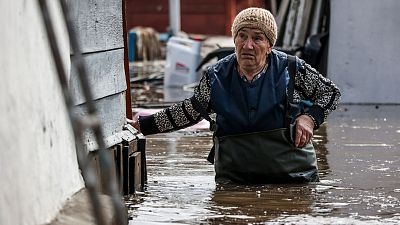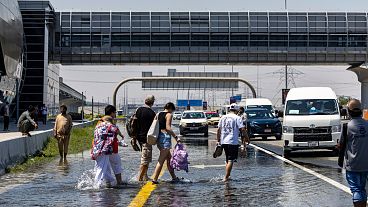Working from home doesn’t mean you’re ‘net zero’, the US authors say, but it can result in some big savings.
Working from home all the time? You could be saving around half the greenhouse gas emissions of your office working peers, according to a new study.
Employees in the US who work remotely full time were estimated to cut their emissions by 54 per cent compared with those working in an office, researchers from Cornell University and Microsoft found.
The COVID pandemic has revolutionised the way we work and where. Many people relocated out of corporate hubs as remote working became more permissible.
What is the best working pattern for the climate?
Rather than a five day week spending 9-5 in the office, many of us work all kinds of hours and combinations now.
But hybrid working is not necessarily a good compromise from an emissions-saving point of view.
Working from home one day a week reduced emissions by just 2 per cent, according to the study published in Proceedings of the National Academy of Sciences (PNAS).
That’s because the energy savings from not being in the office were offset by other factors such as an increase in non-commuting travel and home energy use on these occasional remote days.
Researchers found that working two to four days at home reduced greenhouse gas (GHG) emissions by 11 to 29 per cent.
What is the biggest source of emissions from white-collar work?
To study the impact of different working patterns on GHG emissions, the researchers used multiple datasets - including Microsoft’s own employee data - and examined five categories of emissions including energy use in buildings and ICT.
IT and communications technology, it transpired, had a very small impact.
Full-time home workers’ dramatic CO2 cuts were largely down to less office energy use and fewer emissions from a daily commute.
With fewer workers on the roads during rush hour, there have also been wider WFH savings, as less traffic tends to improve fuel economy.
But working from home isn’t a panacea, the authors warned.
“People say: ‘I work from home, I’m net zero.’ That’s not true,” says co-author Fengqi You of Cornell University.
“The net benefit for working remotely is positive but a key question is how positive. When people work remotely, they tend to spend more emissions on social activities.”
It depends on the home and office, of course. One that runs on renewable energy is obviously a more climate-friendly backdrop to be sorting through your inbox.
As WFH has often been accompanied by a move to more rural “low-density commuting zones”, hybrid workers could be relying more on cars to make their long journeys into the office.
So how can we really decarbonise work?
“While remote work shows potential in reducing carbon footprint, careful consideration of commuting patterns, building energy consumption, vehicle ownership, and non-commute-related travel is essential to fully realise its environmental benefits,” the researchers note.
All these factors contribute and add nuance to your particular work-life emissions. But in a broader sense, the study suggests how office-based employers can cut company emissions.
Sharing office space could help mitigate emissions, as well as downsizing and tightening up energy efficiency measures, it says.
“By sharing office space we reduce capacity and size and reduce our office energy consumption,” You explains.
Since IT and communications account for such a small percentage of total emissions, companies should focus on renewable energy for office heating and cooling, as well as decarbonising commuting.
While the findings were specific to the US, You notes that the modelling and trends were likely to be replicated in Europe.



